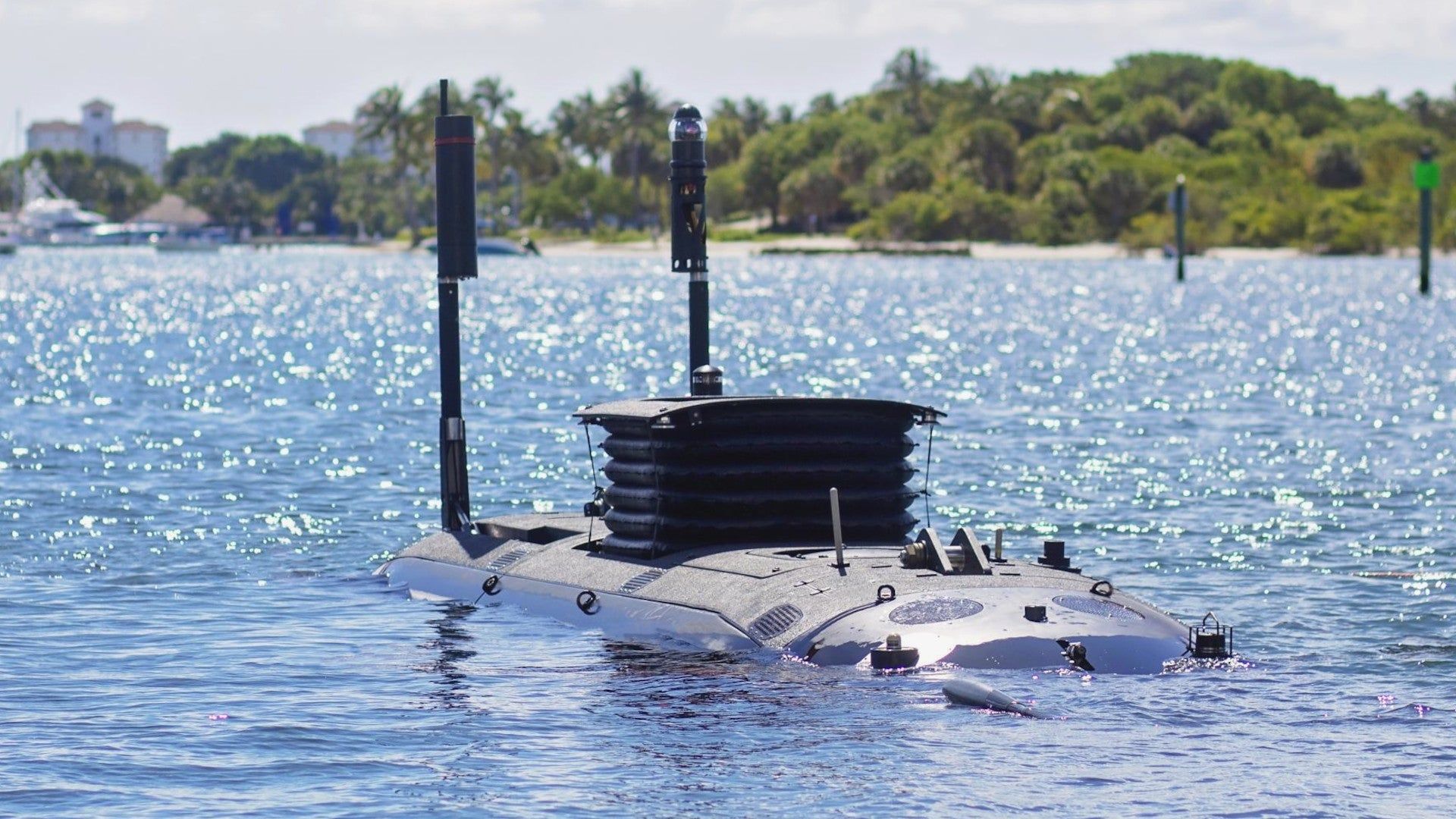Navy SEAL's Long-Awaited 'Dry' Mini-Submarine Capability Has Finally Arrived
The U.S. Navy's newest special operations mini-submarine has now officially entered service. Unlike earlier SEAL Delivery Vehicles, the new Dry Combat Submersible allows the occupants to travel to and from their destination submerged, but without being immersed in often frigid water the whole time. This is a capability the Navy has been working to acquire for decades now.
The Dry Combat Submersible (DCS) reached initial operational capability (IOC) with the Navy sometime in May, its manufacturer, Lockheed Martin, announced earlier today. Back in May, John Conway, the program manager for Undersea Systems within U.S. Special Operations Command's (SOCOM) Program Executive Office-Maritime (PEO-M), had said the initial DCSs would be operational by the end of that month. To date, Lockheed Martin has delivered two DCSs to the Navy and is finishing work on a third example.
A picture of one of the Navy's Dry Combat Submersibles (DCS) out of the water. DOD DOD
"The Lockheed Martin team is proud of the work that has gone into the development and delivery of DCS and supporting USSOCOM to this IOC milestone," Jason Crawford, senior program manager for Manned Combat Submersibles, said in a statement in the press release. "We look forward to delivering the third DCS and supporting DCS into Full Operating Capacity."
The DCS is derived from a mini-submarine design called the S351 Nemesis from MSubs in the United Kingdom. MSubs has been part of the Lockheed Martin-led team designing and building the DCS since the American defense giant began work on the project in 2016.
An S351 Nemesis. MSubs
Though details about the DCS's dimensions and capabilities are limited, the 30-ton displacement and 39-foot-long S351 has an all-electric propulsion system that gives it a maximum range of 66 nautical miles when traveling at a speed of around five knots, according to MSubs. It can dive to depths of around 330 feet (100 meters). Nemesis required a crew of two to operate and has space for up to eight other individuals or suitably sized cargo weight up to approximately one metric ton.
By comparison, from what has been reported in the past, the Navy's newest SEAL Delivery Vehicle (SDV), the Mk 11, is just under 22 and a half feet long and can carry only six passengers along with its crew of two. Also known as the Shallow Water Combat Submersible (SWCS), it is unpressurized and therefore is not as capable in terms of its maximum depth as the DCS.
More importantly, for the Navy and its elite SEALs, who will be the primary users of the DCS, it has a self-contained lock-in/lock-out chamber on top of the hull. As seen in the video below, the service's existing SDVs are so-called "wet" submersibles where their occupants ride fully exposed to the water around them on the way to their destination. This can make for a very cold ride, even in regions where average temperatures might trend on the warmer side. This, in turn, increases operator fatigue and can present potentially serious health risks.
Lockheed Martin's press release also highlights how current SDVs do not allow their occupants to hydrate, since they have to wear wet suits and scuba gear the entire time. This is another potentially significant issue for longer transits.
"The Dry Combat Submersible has the potential to transform undersea warfare for special operators,” Gregg Bauer, C6ISR vice president and general manager at Lockheed Martin, said in a statement today. “DCS provides safe, clandestine delivery for occupants over long distances in a completely dry environment and features a lock-in and lock-out chamber. Occupants arrive at the mission warm, rested, hydrated and ready."
This also means operators can return to their recovery point in the same way after a mission, which may have been conducted entirely underwater. The SEALs, in particular, are trained to conduct a variety of missions below the waves, including sabotage and demolition. DCSs could also be used to help insert SEALs and other special operations forces ashore or extract them.
The Navy has been publicly trying to acquire a DCS-like capability for decades now. The service had begun to lay out requirements for what became known as the Advanced SEAL Delivery System (ASDS) in the 1980s. ASDS was canceled in 2009 after the prototype – a design roughly twice the size of the DSC – was destroyed in a fire the year before. Technical issues had already led to significant cost growth. A follow-on Joint Multi-Mission Submersible program was also axed in 2010.
The prototype Advanced SEAL Delivery System submersible seen here on top of the rear deck of the Los Angeles class attack submarine USS Greenville. USN
DCS has seen its own delays, as well. In June 2020, SOCOM said it expected the mini-submarine to reach IOC within about a year.
The DCS does have limitations, largely due to its size. Unlike the Navy's SDVs, the new mini-submarine is too big to be launched from submerged submarines via currently available Dry Deck Shelters (DDS), as well as larger DDSs the service is working to acquire now. The Navy's Virginia class attack submarines and Ohio class guided missile submarines are also the only ones that can be configured to carry DDSs at present.
A briefing slide SOCOM released last year with details about work on an improved DDS design. SOCOM
Currently, the DCS will have to be deployed via a mothership on the surface, such as an amphibious warfare vessel. The Navy has also been looking at ways to more rapidly deploy the first-generation DCSs using U.S. Air Force C-17A Globemaster III cargo aircraft to deliver them first to forward locations.
With this in mind, the Navy is already eyeing a follow-on DCS Next and wants that improved design to be deployable from a Virginia class attack submarine. Concept art that has been released so far shows what appears to be a mini-submarine with the ability to dock externally on the hull of its mothership submarine. This is how the Navy had expected to employ the abortive ASDS. It's not clear whether the service plans to subsequently modify its initial DCSs to that future configuration, or how feasible that might be.
An artist's conception of the follow-on DCS Next. SOCOM
Regardless, after the better part of a decade of work on DCS, and decades more before that on designs intended to provide similar capabilities, the Navy now has a way to transport SEALs and other special operations forces to and from their destinations in an all-new level of comfort.
Source: The War Zone


